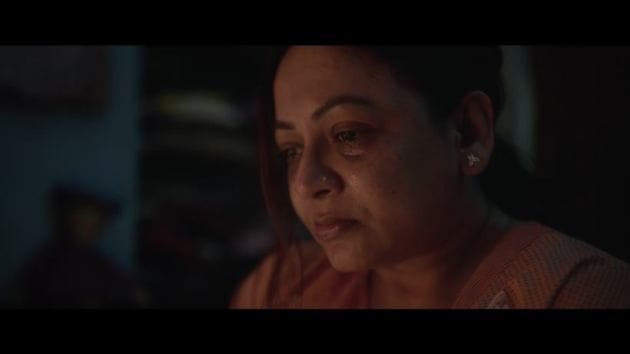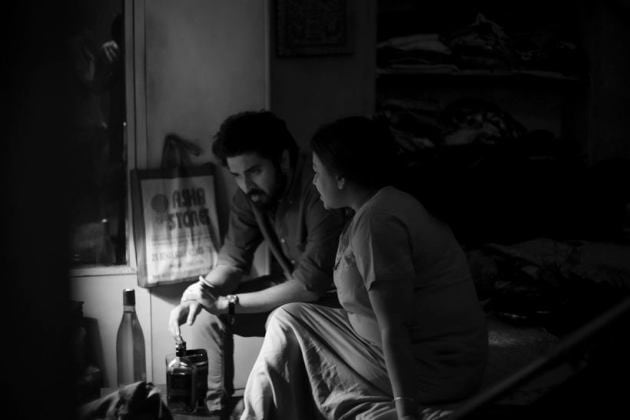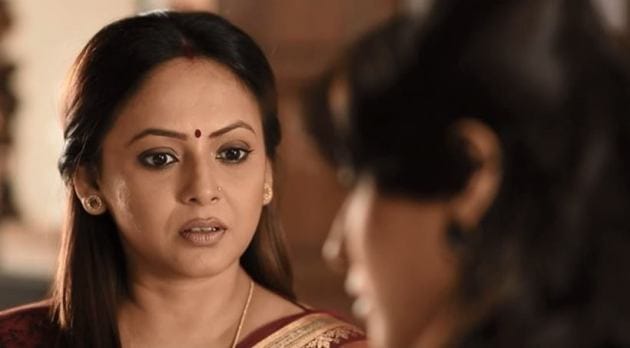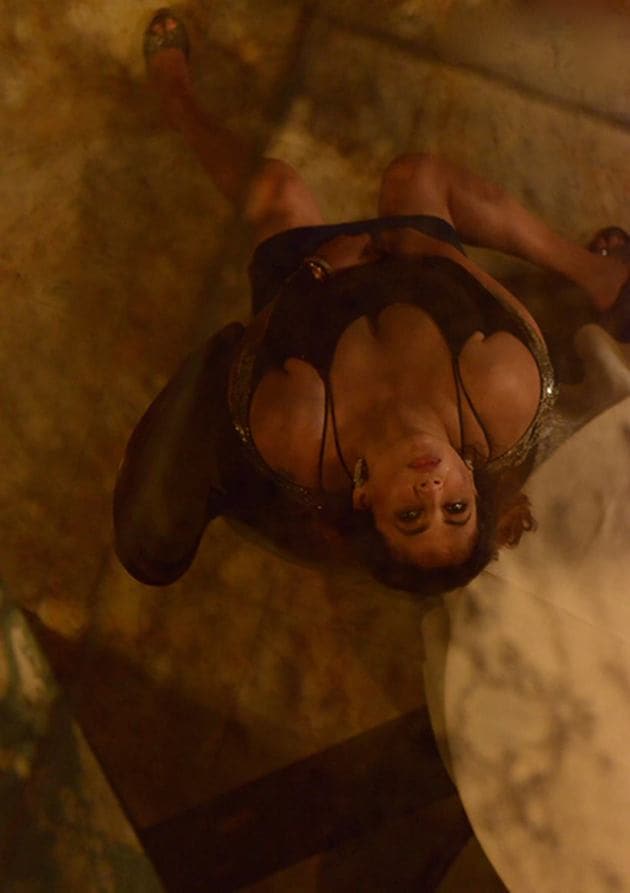Sreelekha Mitra’s Hour of Glory
By bringing Sreelekha Mitra centre stage in Once Upon a Time in Calcutta, director Aditya Vikram Sengupta has given the actor, in her more-than-two-decade career, a role of a lifetime.
Updated: November 7, 2021 15:00 IST 1 / 16
1 / 16By bringing Sreelekha Mitra centre stage in Once Upon a Time in Calcutta, which premiered at 78th Venice International Film Festival, and won Netpac Special Mention Award at Egypt’s El Gouna Film Festival, director Aditya Vikram Sengupta has given the actor, in her more-than-two-decade career, a role of a lifetime. (Text: Tanushree Ghosh; Photo: Stephanie Cornfield)
 2 / 16
2 / 16“People abroad still think Indian films are Bollywood films. After our film was showcased, they were taken aback by the fact that this, too, is Indian cinema, people make such films in India,” says Mitra.
 3 / 16
3 / 16OUATIC opens with Ela’s daughter’s death. With the only life in her dead marriage gone, Ela wants to move on. Some scenes left Mitra “numb, wondering how come Aditya, being a man, could capture the nuances of how a woman feels in such a correct, bang-on way”. (Text: Tanushree Ghosh)
 4 / 16
4 / 16Ela is a signifier of a modern, capitalist city in transition, a gestalt of aspirations and miscalculations. “I could see myself in Ela as well. A bit of Sreelekha rubbed onto Ela and a bit of Ela rubbed onto Sreelekha. An osmosis was happening between us. I could feel Ela’s angst, pain, desperation, but due to that desperation things that Ela did Sreelekha would never do; something which I think is amoral,” says Mitra. (Text: Tanushree Ghosh)
 5 / 16
5 / 16“With every meeting and conversation, it was clear there were more parallels in the personalities of Ela and Sreelekha. She’s extremely collaborative and patient, it’s been wonderful finding Ela with her,” says Sengupta, who, Mitra says, would talk to the wall, practise a scene, before asking his actors to respond. “In that exchange, a scene would develop,” she says. (Text: Tanushree Ghosh; Photo: Trilokjit)
 6 / 16
6 / 16“Aditya has given me a new life, a new birth, a new horizon to look up to. It was a huge booster for an actor who was “suffering from a very low self-esteem”, believing that she’s “finished, lost, poof, gone!” “Looking back, I can say, nobody could have done this role better than me.” (Text: Tanushree Ghosh; Photo: Stephanie Cornfield)
 7 / 16
7 / 16“Back then, television was realistic in the execution of content. There’s been a massive downfall later. I couldn’t see myself doing TV anymore.” In films, she began to be seen and to show. She’s played leads before (Kantatar, Annadata), but mostly known for playing parallel leads. Her tirade has been against a system that plays to the gallery. “I’ve done different roles (a village girl, femme fatale, housewife, fairy aunt, mother, etc.).” (Text: Tanushree Ghosh)
 8 / 16
8 / 16The vitriolic trolls on her social media reflect a public memory which has boxed her into the sex-kitten image, into her bold scenes. “It’s sad. I’m more than that, I’m a cerebral actor. If a scene demands, if I’m comfortable, only then will I do certain things. If people only remember me for the sultry roles, they are sex-starved. We are hypocrites, unwilling to speak on anything regarding sex. There’s no sex education, sex awareness, hence the perversion level has risen so much,” she says. (Text: Tanushree Ghosh; Photo: Stephanie Cornfield)
 9 / 16
9 / 16The male gaze desires and judges her in equal measure. “I’ve been body-shamed time and again, called tholthole boudi (flabby sister-in-law), told that to hide my khaamtis (ineptitude), I talk of favouritism, nepotism,” she says. (Text: Tanushree Ghosh; Photo: Stephanie Cornfield)
 10 / 16
10 / 16The TV reality show Mirakkel made Mitra a household name in the late 2000s, with an unfortunate title refrain: “Slim figure ey bhalo laage Sreelekha (slim Sreelekha looks best)”. “I used to sit in my (show-judge) chair, and cringe within,” she says, “There was so much testosterone around me. In Mirakkel, I was the only female. There were umpteen number of jokes circulating which were derogatory. As a judge, I’d point out if a person was being sexist, or not up to the mark, but when televised, my remarks were edited out, and I was seen just laughing. Bangla television wasn’t ready then, Bangla television isn’t ready still,” says Mitra, who was out of the latest Mirakkel Season 10. (Text: Tanushree Ghosh)
 11 / 16
11 / 16Last year, amid the nepotism debate in the wake of Bollywood actor Sushant Singh Rajput’s death, Mitra took names. “It wasn’t something I did on an impulse; it was latent inside me. Sushant’s death acted as a catalyst. I revisited that trauma (professional and personal life on a standstill, going through separation). I’ve suffered the sense of neglect, of identity crisis, gone through depression, even contemplated suicide. Why would I knock on doors asking for work?” she says. (Text: Tanushree Ghosh; Photo: Stephanie Cornfield)
 12 / 16
12 / 16Mitra has no qualms talking about her age, “but are people ready to accept how old I am? We aren’t just body-shamed, we are age-shamed, too. There’s an age taboo, that we have to look and dress a certain way after we cross 40, why?” (Text: Tanushree Ghosh; Photo: Stephanie Cornfield)
 13 / 16
13 / 16“Heroines have a shelf life of five to 10 years, then they are cast as hero’s/heroine’s mother, and I’m not eager to do any rona-dhona mother roles, I want to do women-of-substance roles. There’s a Stepmom, Thelma & Louise, The Bridges of Madison County in Hollywood, I don’t know what’s happening here,” she says. (Text: Tanushree Ghosh; Photo: Stephanie Cornfield)
 14 / 16
14 / 16“Sreelekha is a versatile actor in the Bengali industry, mostly under-utilised to her full acting potential,” says Subhrajit Mitra, director of Avijatrik (releasing on November 26), with Mitra as a soft, motherly middle-aged widow Ranu di. She will also be seen in filmmaker Anubhav Sinha’s nephew Anshuman Pratyush-directed courtroom drama Nirbhaya (on November 12). (Text: Tanushree Ghosh)
 15 / 16
15 / 16The 2003 Coca-Cola ad with Aamir Khan became the talk of the town, there was Lays ad with Saif Ali Khan, too. “I should have stayed back in Mumbai at that time and explored opportunities. But I’m neither ambitious nor plan my career ahead. My priorities were family that time,” says Mitra, mentioning other projects she had to let go of, including the Kurkure ad campaign. (Text: Tanushree Ghosh)
 16 / 16
16 / 16Artistes are loners, she says, “People think I live a colourful life, but it’s not true. I don’t put on an act. I’m a fighter. There’s so much pain within that I’d rather laugh, live, and snatch every moment.” (Text: Tanushree Ghosh; Photo: Stephanie Cornfield)











